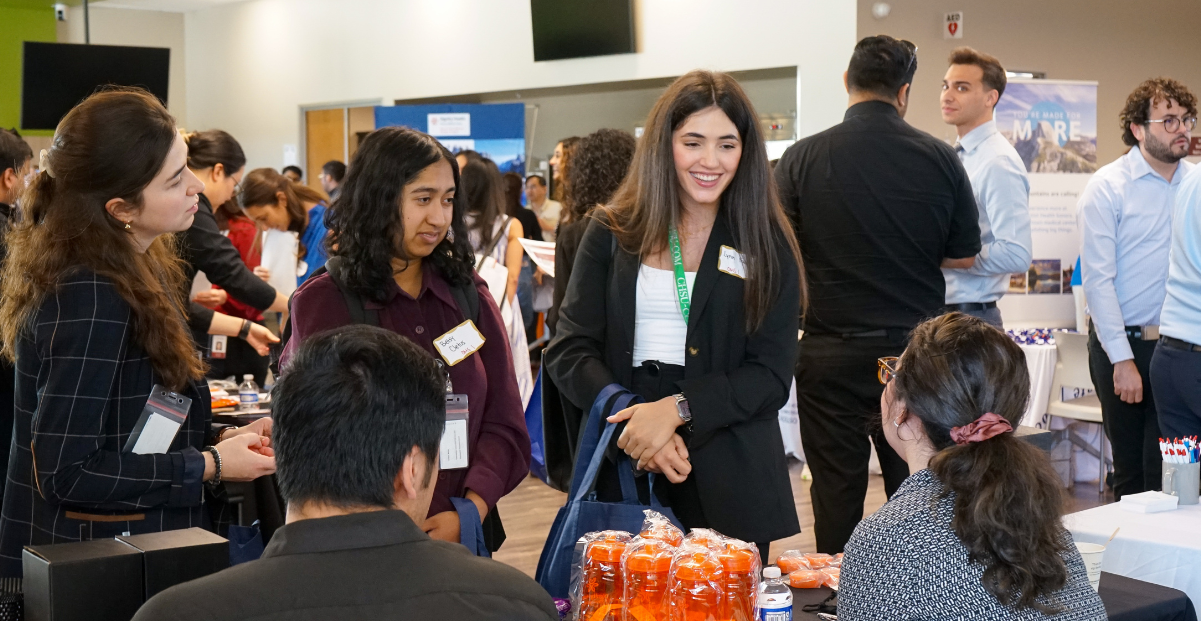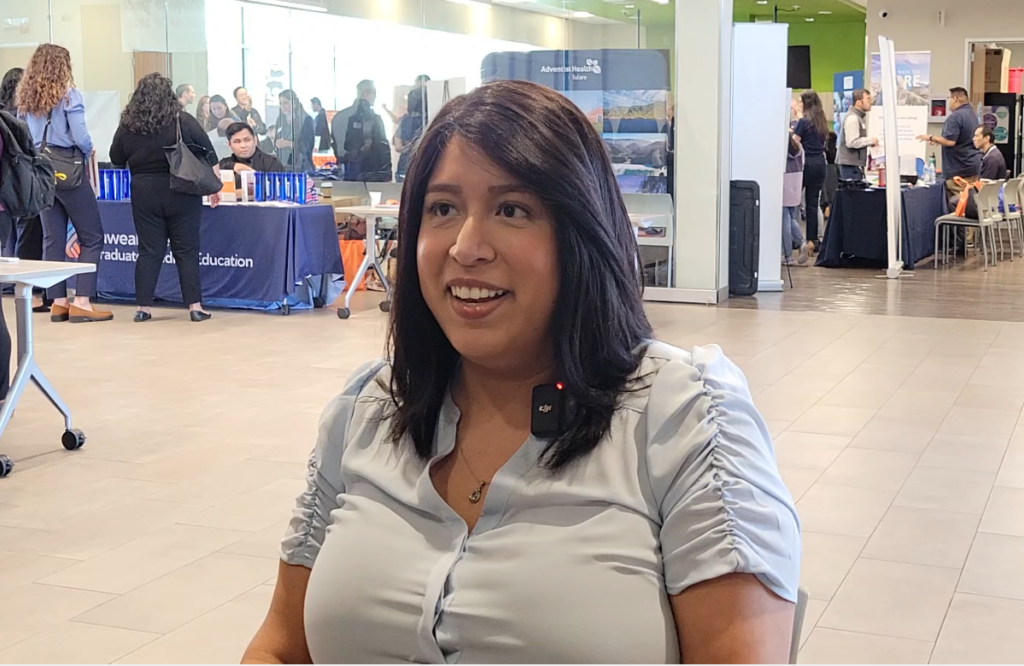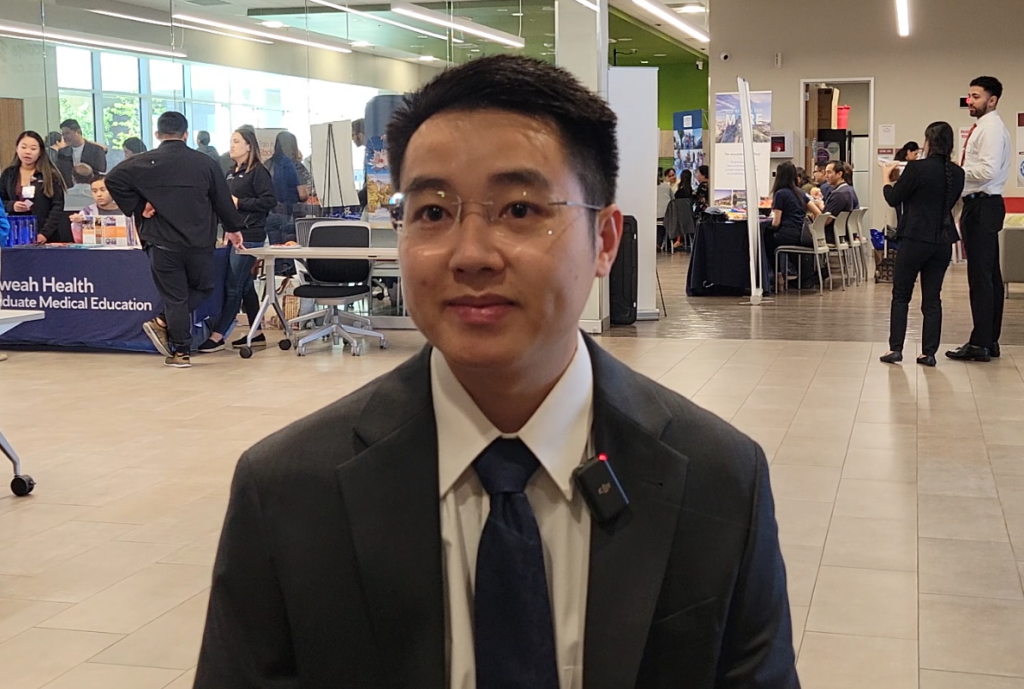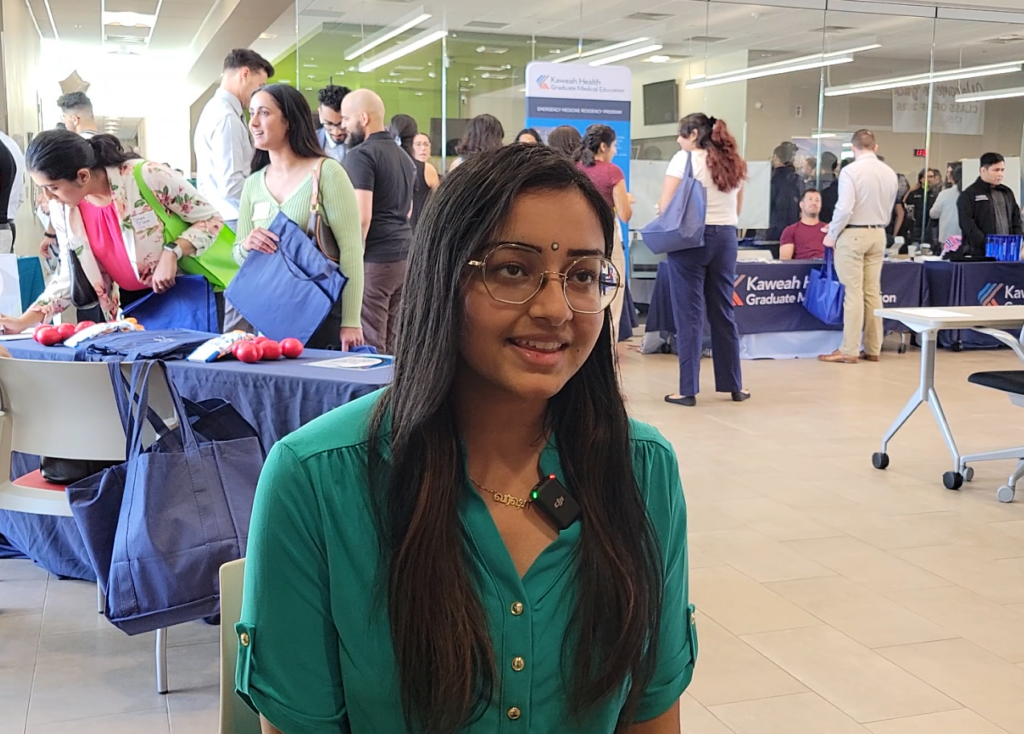Clovis Medical School Connects Students to Central Valley Residency Programs
October 16, 2023

Some might argue that residency training is the most important factor in determining where a physician practices medicine. After graduating from medical school and passing licensing exams, physicians need to complete an average of 3-7 years of residency training (depending on the specialty) before they can practice independently. Data shows that students who attend medical school and complete residency training in the same area are over 80% more likely to practice in that area.
The California Health Sciences University (CHSU) College of Osteopathic Medicine in Clovis is creating programs and opportunities to introduce its medical students to residency programs throughout the Central Valley to help ensure future physicians consider practicing in the region.
On October 14, the CHSU College of Osteopathic Medicine hosted the third annual Residency Programs Fair on its campus to connect medical students with residency programs and various specialties. Dozens of residency program representatives from hospitals and health clinics throughout the Central Valley introduced opportunities to future physicians in hopes they pursue residencies and practice medicine locally after graduating.
“The Central Valley is severely underserved with a big physician shortage and high poverty level exceeding the state level,” said Duc Chung, MD, Assistant Dean for Graduate Medical Education of the CHSU College of Osteopathic Medicine. “By exposing our medical students earlier on, even during their first-year of medical school and at the Residency Programs Fair, they get to learn about a wide variety of specialties offered locally that they may be interested in making an impact.”
In the United States, medical students spend the last two years of school rotating through multiple clinical clerkships with practicing physicians to learn the necessary skills in a breadth of specialties, such as family medicine, pediatrics, or emergency medicine. They spend their final year applying to train with a residency program in the specialty that matches their career goal. The residency program training is required for all medical students after they graduate in order for them to become a licensed physician.
Understanding the difficulties of recruiting physicians in the Central Valley, Sireesh Reddy, MD, Family and Community Medicine Residency Program Director at UCSF School of Medicine regional campus in Fresno, knows that number can be increased by informing hundreds of medical students at the Residency Programs Fair about the primary care residency program available at UCSF Fresno Medical Education Program.
“We’re looking to recruit trainees and residents who want to stay in the Valley,” said Dr. Reddy, “and I’m here today because we have this brand new osteopathic medical school in Clovis that is training residents and future physicians.”
For Brian Wood, MD, Emergency Medicine Program Director at St. Joseph’s Medical Center, his extensive responsibilities in the emergency medicine program, transitional year program, and clinical clerkship rotations have given him a different approach to retain physicians. He attended the Residency Programs Fair to advise about how applying for the fourth-year clinical rotations can be a pathway into securing a residency program at the same medical facility.
“It’s always a benefit when you rotate at a hospital that you end up doing residency at,” said Dr. Wood. “We’ll look at all the other residency applicants too, but you can get a leg up after rotating at our facility because you’ll have been exposed to the seven residency programs at our hospital and we get to know if you have the skills we’re looking for.”
Students from the Central Valley and those from out of the area who attend the CHSU College of Osteopathic Medicine and see the great need for physicians here appreciate the chance to network with local residency programs every year during the Residency Programs Fair.
Bakersfield native, Natalie Peña-Brockett, third-year medical student, witnessed the health disparity daily as a former history and biology high school teacher at North High School.

“During the human reproductive units I taught, I would ask my students how many of them had a regular physician and most often I would only see one or two hands raise per class period,” said Peña-Brockett. “That made me realize that in Bakersfield there was a huge need for physicians and there was a lack of foundation for health literacy. So I want to build Bakersfield and the Central Valley up in that way.”
Peña-Brockett knows that local residency programs have the experience on how to work with Central Valley patients and can help her build her foundation to treat her own community.
“I’m excited about family medicine clerkships for my fourth year so it’s a really good opportunity for me to come to this Residency Programs Fair to network,” said Peña-Brockett, “and talk to these residency programs and ask them what their application process so I can get an idea before I start my fourth year.”
The Residency Programs Fair is a crucial moment for fourth-year medical students who desire to stay local for their residency program.
Carter Muajmoo Yang, fourth-year medical student, is a second-generation Hmong refugee immigrant from Fresno who recognized the need for physicians who can navigate the cultural and language barriers to treat a diverse population like his grandfather who suffered with colon cancer.

“My grandfather was hesitant to get life saving treatment in the United States because of his traditional Hmong belief that surgery would affect him going into the afterlife,” said Yang. “He traveled to Thailand to see a physician from the same culture and who spoke the same language to feel comfortable with getting a colectomy, but it was too late with his aggressive cancer.”
After applying to a hundred internal medicine residency programs due to how competitive the national process is, Yang attended the Residency Programs Fair to connect with representatives in-person about his applications.
“October is a big time for interview season, so it’s a great opportunity to advocate for myself to show that I’m interested in the program,” said Yang. “It’s a great opportunity to meet with program directors and current residents to learn about their culture and training at the program.”
Unfamiliar with the area, non-native fourth-year medical students can also gain familiarity with local residency programs at the Residency Program Fair to help them to understand if their perspective fits with the programs’ training to serve the underserved patients.
Hoping to get accepted into an internal medicine residency program, Varsha Swamy, fourth-year medical student and Class President, believes meeting representatives in-person can make the difference on the path of a student’s career.

“Residency programs are integral part of our education. As medical students, it is the next step if we want to go into direct patient care,” said Swamy. “You’ll be receiving the majority of your training there where you get to finally be independent and treat your patients but also have the guidance to learn and make mistakes. So I think choosing which residency you go into has an impact on your career and as a physician.”
Originally from Cupertino in the California Bay Area, Swamy is a first-generation immigrant from Tamil Nadu, South India and is the first in her family to pursue becoming a physician with the goal to change the landscape of health by teaching patients about their diagnosis and empower them to make healthy medical decisions.
“I grew up in Cupertino where it’s a well-resourced area, but they tended more to students involved with technology and computer sciences,” said Swamy. “So I didn’t have much exposure to medical careers growing up. That’s why I love inspiring kids in the Central Valley through volunteer service in hopes they’ll maybe come back and be future health care providers too.”
The fourth-year students in the CHSU College of Osteopathic Medicine are actively applying and interviewing with residency programs this fall and winter. On March 15, 2024, the students will learn where they “matched” for residency during the national Match Day for all medical students in the U.S.
Then the inaugural cohort of CHSU medical students will graduate in May 2024, before starting their residency training.